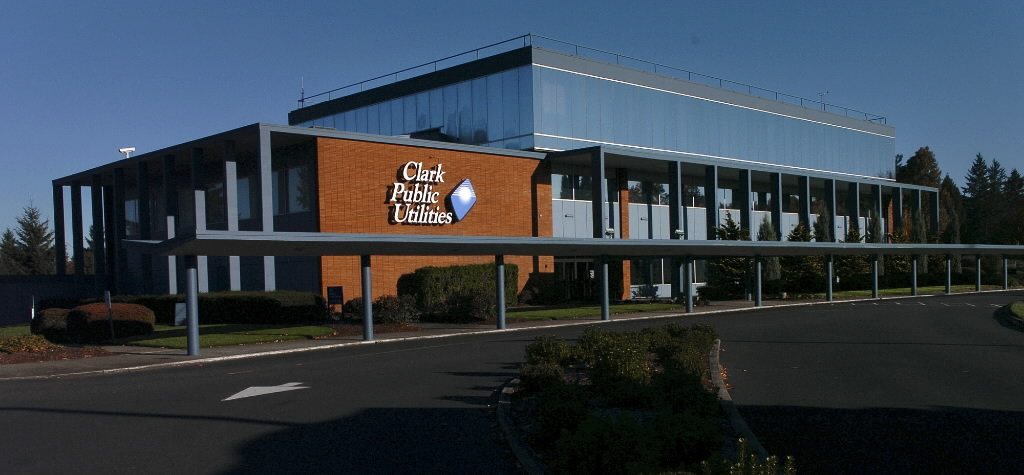Clark Public Utilities commissioners will convene Tuesday to weigh a proposed electric rate increase of up to 4.9 percent for residential customers.
But here’s the tricky part: While your rate would go up, your monthly bill would actually go down for two years because of a refund connected to a complicated legal settlement.
Industrial and commercial customers, however, wouldn’t get the two-year reprieve and would instead face rate hikes of up to 3.9 percent by November.
The utility is proposing the rate hikes to bridge a $13.7 million revenue shortfall on an anticipated $380.42 million electric system budget for 2012.
The Bonneville Power Administration’s decision to increase wholesale power rates earlier this month and a voter-approved push into wind power are driving the projected budget gap, utility officials said.
It’s a thorny situation that underscores the complex new world of providing and using power in the Pacific Northwest.
The utility’s three elected commissioners — Nancy Barnes, Carol Curtis and Byron Hanke — will convene a public hearing at 9 a.m. Tuesday at 1200 Fort Vancouver Way to consider adopting the rate hikes. Commissioners are expected to further review and adopt new rates on Oct. 25.
Rate increases would go into effect Nov. 1.
Noting the complexity behind the changes, especially for residential customers, Rick Dyer, director of finance for Clark Public Utilities, said, “We’ve got a full-on campaign to work through that,” including a public communications plan and training for the utility’s customer representatives to handle questions.
Alternatives
For residential customers, commissioners are reviewing four rate-hike plans, each involving a rate increase of either 3.9 percent or 4.9 percent.
For example, one alternative that raises the rate by 3.9 percent would add $2 to the base monthly residential customer charge of $10, and boost the energy cost, which is currently 7.98 cents per kilowatt-hour, to 8.16 cents per kilowatt-hour.
A household that burns 1,200 kilowatt-hours a month now receives a bill of $105.76.
Now comes that tricky part: That household’s bill would actually fall to $103.10 despite the 3.9 percent rate hike. In fact, under all four rate-hike alternatives, residential customers’ monthly electric bills would decrease by as little as $1.58 or as much as $2.70.
Settlement, credit
It’s a head-scratcher, and it comes courtesy of a legal settlement of a highly complex and controversial issue: the residential exchange program. The exchange gives residential and small-farm customers of for-profit utilities such as Portland General Electric a share of low-cost hydropower generated by the federal system.
Earlier this year, the Bonneville Power Administration and regional power providers reached a $4.07 billion agreement on residential exchange payments, which puts about $13.8 million in the pocket of Clark Public Utilities each year for the next two years. The agreement mandates that those funds be returned to residential and small-farm customers in the form of a credit on their bills.
That’s how it’s possible for residential customers to see their rates go up but their bills go down. It’s like buying a product that comes with a rebate, only in this case you’d purchase electricity at a higher cost but receive a credit through 2013 that more than offsets it.
Wayne Nelson, the utility’s general manager, said he anticipates that the credit from the exchange program settlement will expire after two years, at which point customers would pay the new, higher rate.
Nevertheless, Nelson said, other factors, including a drop in natural gas prices, could offset the rate hikes in two years. Commissioner Barnes said that “with good management and a changing natural gas world, we may be able to more than make that up.”
Because the residential exchange program doesn’t apply to them, the utility’s industrial and commercial customers would bear the cost of increased electric rates immediately.
For an industrial employer that pays roughly $1 million per month for electricity, a rate increase of 3.9 percent would add $39,000 to their bill.
BPA, I-937
Clark Public Utilities isn’t alone in grappling with a vastly changing energy market. For example, the public utility district in Cowlitz County is considering hiking electric rates by as much as 18 percent.
Clark Public Utilities, which provides electricity to more than 183,000 residential and business customers in Clark County, currently gets its energy from the Bonneville Power Administration, its own gas-fired River Road Generating Plant and purchases on the open market.
The utility last raised rates in August 2010, when commissioners adopted a 5.7 percent increase to cover a projected year-end shortfall.
At that time, a lousy economy and mild weather depressed demand for electricity, prompting the utility to examine ways to cover the deficit.
It was the third rate increase since 2003.
Big bumps in the cost of providing power, triggered by the Bonneville Power Administration rate hikes and statewide renewable energy law Initiative 937, caused the utility’s $13.7 million 2012 revenue shortfall.
Earlier this month, BPA raised wholesale power rates for its voter-owned utilities, including Clark Public Utilities, by 7.8 percent.
That increase — coupled with contract changes BPA made that put more responsibility on utilities to handle growth in demand for energy — added $14.1 million to Clark Public Utilities’ expenses for 2012.
Then there’s Initiative 937, approved by Washington voters in 2006. The law requires large utilities to get 15 percent of their power from renewable sources by the year 2020, following step-up requirements of 3 percent in 2012 and 9 percent in 2016.
To comply with I-937 — dubbed “The Energy Independence Act” — Clark Public Utilities’ elected three-member board in 2009 agreed to purchase the entire output of a 63-turbine wind farm near Milton-Freewater, Ore., at an estimated cost of $338 million over 20 years.
Next year, the utility’s energy mix changes as it adds wind power to its portfolio. “We have to incorporate it into the power supply for our customers,” said Erica Erland, corporate communications manager for the utility.
Complying with I-937, including adding wind power to its mix and investing in conservation measures, is projected to increase the utility’s expenses in 2012 by $14.9 million.
Altogether, the utility must contend with an estimated $30 million increase in expenses headed into 2012.
In its draft 2012 budget, the utility cuts those expenses by more than half by increasing electricity sales, reducing the cost to service its debt and benefiting from lower gas prices at its River Road Generating Plant.
“There are some things in play that we’re going to try to take advantage of,” said Dyer, the finance director.
That leaves the utility’s electric system with projected revenues of $366.66 million in 2012 and projected expenses of $380.42 million — a revenue shortfall of roughly $13.7 million.
To cover the deficit, the utility is proposing the customer rate increases.
CEO got pay boost
About 72 percent of Clark Public Utilities’ electric system budget goes to purchase power and to deliver it to customers. The utility apportions about 12 percent of its electric system budget for operation and maintenance costs, including payroll and business expenses.
Erland, the utility’s corporate communications manager, said the utility has, over the past couple of years, instituted wage and hiring freezes to hold down expenses, although “that’s started to loosen a bit for non-union employees.”
In August, the utility’s three commissioners voted unanimously to increase the salary of Nelson, the general manager, by 11 percent. That raised Nelson’s salary by $22,766 — from $202,234 a year to $225,000.
It was Nelson’s first pay raise since 2008. Up to that point, Nelson had insisted on a pay freeze in recognition of a tough economy.
But commissioners said it was time for a raise because of his excellent leadership and because a study showed his pre-increase salary, while within a “normal range” of compensation, was 19 percent below the market median.




